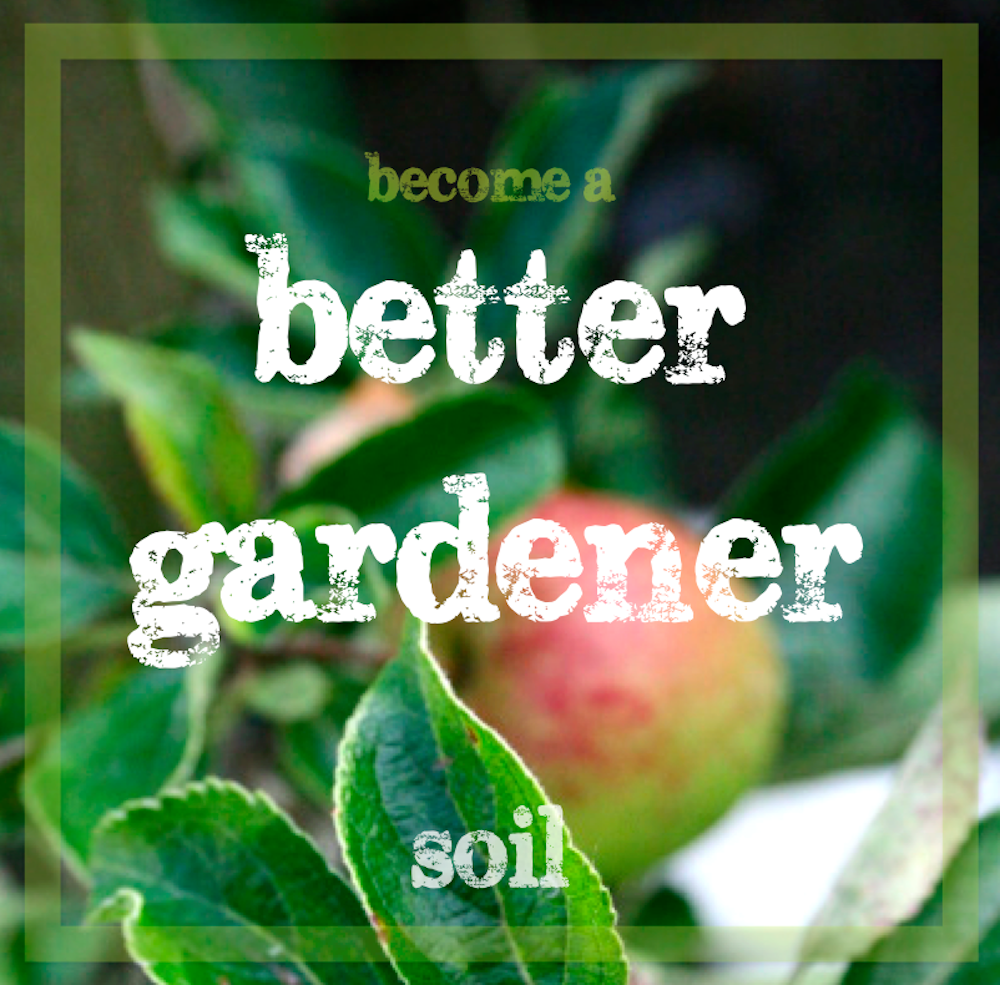
On the second day of our challenge to make you a better gardener when it comes to soil, we’re looking at how to deal with problem soils. If you don’t have any problems at all with your soil, then you should read through the course notes anyway, just in case you find yourself cursed with any of these problems.
Changing the pH of your soil
As we discussed yesterday, the ideal range for soil pH is between 5.5 and 6.5. It doesn’t matter too much if your soil is a little outside of this, but if you have got a much lower or much higher pH, then it is worth carrying out a few tasks to rebalance the soil, as your plants will be much happier.
The first thing you should do on any soil with a very high or a very low pH is to add as much organic matter as you possibly can. This in itself will help neutralise things, and it will also introduce missing minerals to your soil. Over the next couple of days, we’ll be looking in great detail at sourcing and adding organic matter to your soil.
Improving acid soil
If you are gardening on very acidic soil, consider a technique called liming in the autumn. This is when you dig in either agricultural lime or dolomite lime. Do not use quicklime as this is highly caustic. You should also avoid adding manure at the same time as the lime as this can produce a reaction.
Check the instructions on the packet of whichever liming product you choose, but a rough guide of how much to use is that you should add around 10lb per 100 square foot of garden soil. This will take your soil pH up one level.
You can also add spent mushroom compost to your soil, as this is very alkaline. Dig it in as if you were digging in normal compost.
Wood ash is another source of high pH, which you should dig into your soil in the autumn, following the same proportions as if you were liming the soil. You should know the source of your wood ash. If it has been chemically treated or is from the wood of a black walnut, which is toxic to many other plants, then don’t use it.
Other good sources of calcium to raise your soil’s pH are bonemeal and calcified seaweed, although they will not raise the levels by very much, and so should be used to compliment one of the other techniques outlined above.
Improving alkaline soils
To acidify soil that is too alkaline, you will need to add sulphur. This doesn’t sound very organic, but it is accepted as an organic gardening technique, so please go ahead if you are gardening on an organic site like most F&F readers.
Once added, the sulphur is converted by soil organisms into sulphuric acid, which lowers the pH of the soil. The more organic matter there is in the soil, the more sulphur you need as organic matter acts a buffer to converting the sulphur to sulphuric acid. Again, consult the instructions on your sulphur product, but a rough guide would be to add 135-270g per sq m.
You can also add coffee grounds to your soil every year to increase the acidity. Here’s a bit more information on this.
If you have a plentiful source of either bracken or pine needles, stuff as many of them as you can into a bin liner with a few holes punched into it and allow them to rot down over three years for bracken and five years for pine needles. They will provide an acidic leafmould that can be dug in or added to your soil as a mulch.
Does your garden have a pH problem? Make a plan now for neutralising it. Now is the perfect time to lime or add sulphur to your beds. You could set a date in the spring for adding more manure to your beds to further neutralise the pH and return vital nutrients.
Clearing weed-infested soil
If you want to get the best out of your soil, you must make sure that all the nutrients are not being stolen by competing weeds. Clearing a plot properly of weeds is hard work, but it is so important to make the most of your soil.
As a general rule, clearing soil full of weeds is very hard work, but it is worth investing a large amount of initial time and effort to eradicate them from your plot so that they do not recur profusely year after year.
Perennial weeds don’t just reproduce from seeds. Often they will propagate themselves from the smallest fragment of root, which means that easy fixes like rotovators will actually be the most expensive mistake you’ll ever make.
The best way to clear a plot of weeds is firstly to dig through the soil to the depth of at least a foot and remove the roots by hand. Don’t put the roots on your compost heap: burn them or leave them to soak in a bucket of water for a few months before doing anything with them to ensure you don’t return them to the soil. If you are dealing with horsetail or Japanese Knotweed, destroy these entirely. For Japanese Knotweed, you will need a specialist to help you eradicate it, and the sooner you get onto it, the better.
Once you’ve dug all the roots you can find, cover the soil with black plastic sheeting, thick cardboard or another impermeable cover. Cover the soil for as long as you can do without it: a year if possible, and you’ll find that emerging weeds will have significantly died back when you start growing.
Think seriously about how to eradicate the perennial weeds that are clogging up your plot. If you can, cover as much of it as possible. Set aside a couple of weekends in your diary where you can dig and remove the roots: autumn is a good time when the ground is soft and growth is still obvious.
Dealing with stony soil
Stony soil isn’t a problem if you never dig and you don’t grow vegetables and your plants don’t mind having to hunt that little bit harder for nutrients. But it is better practice to remove the stones and rocks from your soil when you cultivate it for the first time. You’ll thank yourself for it in the long run.
Remove the larger rocks by hand, but for stones you should use a riddle (which is a large garden sieve for separating the soil from stones by hand).
Fixing poor drainage
Poor drainage will kill your plants, and make your life as a gardener more back-breaking and less satisfying. Like all the other problems listed in this post, it’s worth getting this sorted at the start.
If your garden is very poorly drained, you should look at installing a drain and soakaway system that runs through the plot and takes off the excess moisture. But there are plenty of things that you can do to improve your soil in addition to this.
You could dig your own trench drain, about 3ft deep and a 1ft wide. Fill the bottom third with stones, rubble, broken pottery etc and then fill back in with soil.
Digging in plenty of organic matter every year will improve the drainage no end by loosening up the soil structure.
You can dig in special horticultural grit to the first foot of your soil to improve the drainage on heavy soils.
Loosening up compacted soil that has been trampled on will mean water will run freely through the soil rather than gathering on the surface.
Do you need to drain your garden? Work out whether you have a serious waterlogging problem when it rains, or whether some of the steps above such as digging in compost and grit would solve your problems.
That was hard work. Tomorrow’s post will be quite hard work too. But this is all about making you a better gardener, and you’re getting there. Keep going.

Is weed number 6 Japanese Knot weed? I can’t see a name on the photo/instructions.
Hi Steve, have you clicked on the image? It is Japanese Knotweed, and this is what the caption on the slideshow says: This plant is officially classed as noxious under law. The roots grow to 2m deep, and the plant grows at a rate of several inches a week during the growing season. It can regenerate from a fragment. Your only option is to engage the services of an environmental health professional.
Thanks - so it does. I hadn’t clicked on the image because I viewed as a slideshow.
Most interesting series of articles, thanks for doing it.
Glad you are enjoying them!